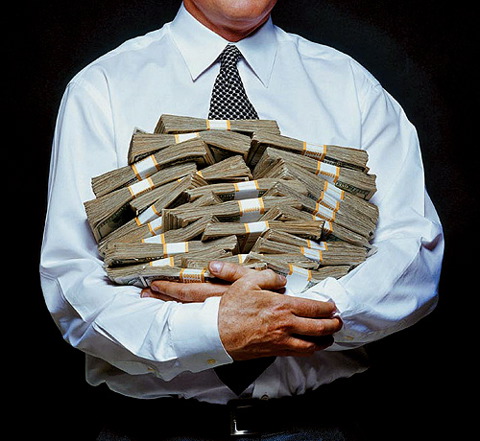Experienced Investor
Is the share buyback surge good news for investors?

Share buybacks have been growing in popularity. Should investors be delighted, or worried?
With bond yields and interest rates stubbornly low, investors have turned their attention to companies with high levels of cash on their balance sheets as these firms can use this liquidity to reward shareholders.
Historically, these rewards took the form of a direct dividend payment. In recent decades, businesses have increasingly remunerated shareholders by way of share buybacks.
As the name implies, in a buyback a company repurchases its own shares, reducing the number of its shares on the market and increasing the value of its available shares in the process.
The practice is currently prevalent in the US – understandable, as the largest companies hold copious amounts of money.
The combined cash balance of the S&P 500 was $1.4trn at the end of 2014. Despite Presidential candidate Hillary Clinton proposing to restrict them, a record $1.2trn of buybacks are scheduled for 2015. The buyback bug has spread elsewhere too, with buybacks in Japan also reaching record levels recently.
With companies in the UK and Europe increasingly confident about the economic outlook, and their cash balances rising, buybacks could start to soar closer to home.
The question is: what do buybacks say about the health of a company, and what do they mean for investors?
Always positive?
A buyback is (or should be) funded by excess cash a company has no other use for. If a company holds excess cash, this is a good indication it has no cash flow issues and little or no debt, so buybacks can serve as a good valuation metric.
Buybacks also have a number of tangible benefits for investors, the first being a boost to the share price, the second a boost to dividend payouts.
“A buyback means fewer shares publicly trade – this improves share price, and an investor’s shares are worth more as a result. This increase in value may last as long as management holds the repurchased shares,” explains Adrian Lowcock, head of investing at AXA Wealth.
“A buyback can also mean an increased dividend, as the company in question ends up paying out on fewer shares. Furthermore, with fewer shares trading, earnings per share almost always rise. This helps drive a higher stock price.”
Russ Mould, investment director at AJ Bell, notes a buyback can provoke a positive market response.
“Markets consider it a sign a company believes investors do not appreciate its real value – they often respond by pushing the price higher,” he says.
These views are supported by empirical data. In November 2014, Peter Garnry, head of equity strategy at Saxo Bank, noted the S&P 500 constituents which spent the most on share buybacks (as a percentage of market capitalisation) outperformed the US benchmark index by an average of two percentage points in 2014. The top 20 spenders on buybacks exceeded the index by three percentage points, for a total of 13.3 per cent last year.
Greater fools?
Although dubbed by UBS in 2011 as “positive under any scenario”, some investors are actively hostile towards them.
Mould warns investors against casually accepting the popular view that a buyback indicates management believes its company’s shares are undervalued.
“Traditionally, companies buyback during bull markets, when their stocks tends to be more expensive, not during bears, when their stock is probably much cheaper,” he says.
The chart below illustrates this phenomenon. In the years immediately preceding 2008, buybacks surged in volume, peaking in 2007 (at a then-record $863bn) before collapsing in step with the financial crisis. They accelerated again in 2011.
Source: Compustat
For Terry Smith, founder and chief executive of Fundsmith, this pattern suggests buybacks are not designed to offer returns to existing investors, but are a way for management to create value for themselves.
“You overpay for investments – on the basis a greater fool will pay even more for them and enable you to sell at a profit,” he explains.
“Share buybacks only create value for investors if the shares repurchased are trading below intrinsic value and there is no better use for the cash which would generate a higher return.”
In Lowcock’s opinion, a company with no better use for its cash pile is in itself a cause for concern, as it may suggest a lack of imagination or ingenuity on the part of the firm in question – after all, excess cash can be used for investment, hiring new staff, developing new products and expanding operations.
“If a company can think of no better use for its money than repurchasing shares in themselves, you should ask why that is,” he says.
Excess cash can also be used to increase dividend payouts to shareholders. However, Lowcock notes a buyback can mean a reduced dividend. Buybacks are expensive – once completed, businesses may have less money to pay out to shareholders. Income investors may need to be wary of buybacks as a result.
Balancing views
Buybacks should perhaps be neither feared nor embraced, but assessed on an individual basis. Warren Buffett, in a 2011 letter to Berkshire Hathaway shareholders, stated he favoured repurchases when two conditions are met.
“First, a company has ample funds to take care of the operational liquidity and needs of its business – second, its stock is selling at a material discount to the company’s intrinsic business value, conservatively calculated.”
However, for investors wishing to capitalise on the return potential of buybacks, assessing every buyback may be difficult. As a result, active funds targeting income or buybacks may offer value.
[article_related_posts]
